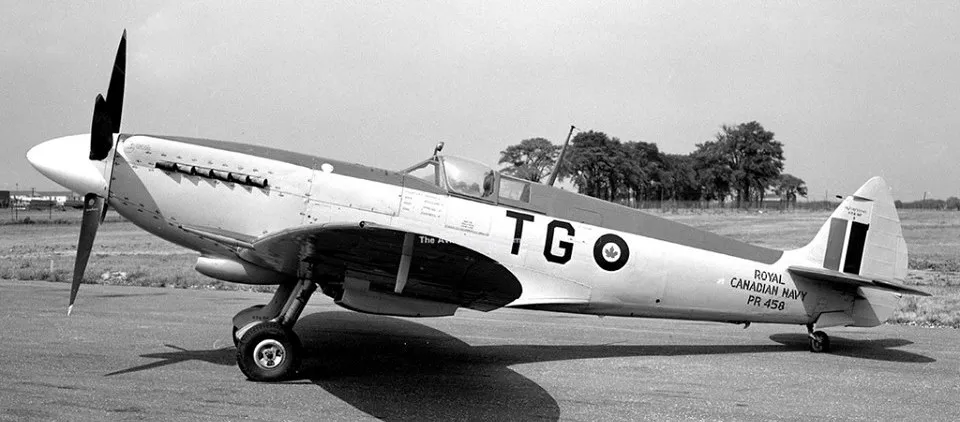Elton, Alfred Charles (Lieutenant)
Killed in Flying Accident 1949-August-23

Birth Date: 1925-January-28
Born: Simcoe, Ontario
Parents: Son of deceased parents Alfred Ernest and Gertrude (ne Colby). Stepson of Louise Elton of Toronto, Ontario. Brother of Dennis, Mary and Jean Elton.
Spouse:
Home: Simcoe, Ontario
Enlistment:
Enlistment Date: unkown date
Service
RCN
Unit
(RCN)
Base
HMCS SHEARWATER
Rank
Lieutenant
Position
Service Numbers
O22324
Home
Seafire serial: PR502

Supermarine Seafire Mk. XV, RCN (Serial No. PR548)
The Supermarine Seafire was a naval version of the Supermarine Spitfire adapted for operation from aircraft carriers. It was analogous in concept to the Hawker Sea Hurricane, a navalised version of the Spitfire's stablemate, the Hawker Hurricane. The name Seafire was derived from the abbreviation of the longer name Sea Spitfire.
The idea of adopting a navalised carrier-capable version of the Supermarine Spitfire had been mooted by the Admiralty as early as May 1938. Despite a pressing need to replace various types of obsolete aircraft that were still in operation with the Fleet Air Arm (FAA), some opposed the notion, such as Winston Churchill, although these disputes were often a result of an overriding priority being placed on maximizing production of land-based Spitfires instead. During 1941 and early 1942, the concept was again pushed for by the Admiralty, culminating in an initial batch of Seafire Mk Ib fighters being provided in late 1941, which were mainly used for pilots to gain experience operating the type at sea. While there were concerns over the low strength of its undercarriage, which had not been strengthened like many naval aircraft would have been, its performance was found to be acceptable.
The Royal Canadian Navy and French Aviation Navale also obtained Seafires to operate from ex-Royal Navy aircraft carriers following the end of the Second World War. Canada's Seafire Mk XVs were flown from HMCS Magnificent and HMS Warrior before being replaced by Sea Furies in 1948. Wikipedia
